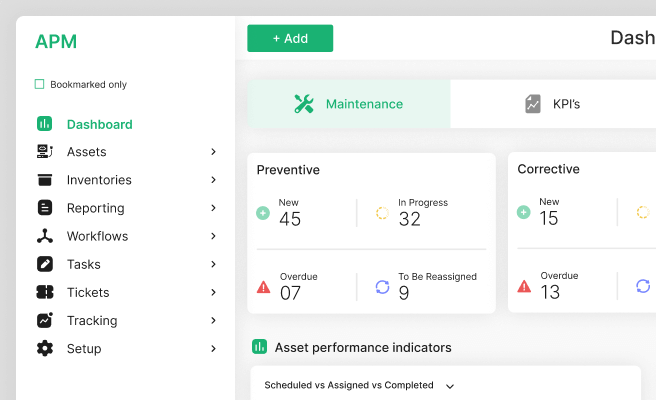Rapid Prototyping
<p>Rapid prototyping is a crucial process in product design that allows designers and engineers to quickly create, test, and refine their ideas. By producing a minimal viable product (MVP) or a series of iterations, teams can gather feedback, identify potential issues, and make necessary adjustments before full-scale production. This approach significantly reduces time-to-market and enhances the overall quality of the final product.</p>
<p>The concept of rapid prototyping has evolved over the years. Initially used in manufacturing for creating physical models, it has now expanded into various fields, including software and digital product design. The integration of technologies like 3D printing, computer-aided design (CAD), and agile methodologies has further streamlined the process, making it more accessible and efficient.</p>
<h2>Importance of Rapid Prototyping in Product Design</h2>
<p>Rapid prototyping is vital for several reasons:</p>
<ul>
<li><strong>Speed and Efficiency:</strong> Quickly transform ideas into tangible models or interfaces, allowing for faster iteration and refinement.</li>
<li><strong>Cost-Effective:</strong> Identify and address design flaws early, reducing the risk of costly changes during later stages of development.</li>
<li><strong>User Feedback:</strong> Engage with users early in the design process to gather valuable insights and validate assumptions.</li>
<li><strong>Collaboration:</strong> Facilitate better communication and collaboration among cross-functional teams, including designers, engineers, and stakeholders.</li>
</ul>
<h3>Components of Rapid Prototyping</h3>
<p>Rapid prototyping comprises several key components:</p>
<ul>
<li><strong>Conceptualization:</strong> Define the product concept, goals, and user requirements.</li>
<li><strong>Design:</strong> Create initial sketches, wireframes, or digital models using tools like <a href="https://www.adobe.com/products/xd.html" style="color: #2896FF; text-decoration: underline;">Adobe XD</a> and <a href="https://www.figma.com/" style="color: #2896FF; text-decoration: underline;">Figma</a>.</li>
<li><strong>Development:</strong> Build the prototype using appropriate methods, such as 3D printing, coding, or no-code platforms.</li>
<li><strong>Testing:</strong> Conduct user testing sessions to gather feedback and identify areas for improvement.</li>
<li><strong>Iteration:</strong> Refine the prototype based on feedback and repeat the process as necessary.</li>
</ul>
<h3>Use Cases and Examples</h3>
<p>Rapid prototyping is used across various industries, including climate tech. For instance, a company developing a smart irrigation system might use rapid prototyping to create and test different sensor configurations and user interfaces. By iterating quickly, they can ensure the final product meets the needs of farmers and supports sustainable agricultural practices.</p>
<p>Another example is in the software industry, where companies like <a href="https://www.spotify.com/" style="color: #2896FF; text-decoration: underline;">Spotify</a> use rapid prototyping to refine their user experience and introduce new features. By gathering user feedback early and often, they can make data-driven decisions and continuously improve their service.</p>
<h3>Challenges and Solutions</h3>
<p>While rapid prototyping offers numerous benefits, it also presents certain challenges:</p>
<ul>
<li><strong>Resource Constraints:</strong> Limited budget or time may hinder the rapid prototyping process. Solution: Prioritize features and focus on creating MVPs to maximize resource efficiency.</li>
<li><strong>Technical Limitations:</strong> Depending on the complexity of the product, technical constraints may arise. Solution: Leverage advanced tools and technologies, such as CAD software and 3D printing, to overcome technical challenges.</li>
<li><strong>User Feedback:</strong> Gathering meaningful user feedback can be difficult. Solution: Engage with a diverse group of users and conduct regular testing sessions to obtain comprehensive insights.</li>
</ul>
<h3>Tools for Rapid Prototyping</h3>
<p>Several tools can assist in the rapid prototyping process:</p>
<ul>
<li><a href="https://www.sketch.com/" style="color: #2896FF; text-decoration: underline;">Sketch</a> - A popular design tool for creating wireframes and digital prototypes.</li>
<li><a href="https://www.autodesk.com/products/fusion-360/overview" style="color: #2896FF; text-decoration: underline;">Fusion 360</a> - A comprehensive CAD software for 3D modeling and simulation.</li>
<li><a href="https://www.invisionapp.com/" style="color: #2896FF; text-decoration: underline;">InVision</a> - A platform for designing, prototyping, and collaborating on digital products.</li>
</ul>
<h2>Conclusion</h2>
<p>Rapid prototyping is an essential practice in modern product design, enabling teams to quickly create, test, and refine their ideas. By embracing this approach, companies can reduce time-to-market, improve product quality, and effectively meet user needs. To learn more about improving your rapid prototyping strategies, consider exploring resources like <a href="https://www.nngroup.com/articles/prototyping-101/" style="color: #2896FF; text-decoration: underline;">Nielsen Norman Group's Prototyping 101</a>.</p> <p>To understand the power of design across industries and sectors, view our diverse portfolio of works. <a href="https://www.whatifdesign.co/work" style="color:#2896FF; text-decoration:underline;">View our portfolio</a>.</p> <p>If you’re looking for inspiration to elevate customer and user experience for enterprise-grade products, View our work with the Ministry of Health of Saudi Arabia for curating the UX of an <a href="https://www.whatifdesign.co/work/enterprise-software-for-hospitals" style="color:#2896FF; text-decoration:underline;">Asset Management Tracking Platform</a></p>
<p>Ready to get started? <a href="https://cal.com/akhilak/what-if-design?duration=30" style="color:#2896FF; text-decoration:underline;">Book a 1:1 consultation call</a> with us today.</p>

Let's scale your impact with great design.
Free consultation, no sales pitch
Thank you! Your submission has been received!
Oops! Something went wrong while submitting the form.
Let’s talk
Nothing great is built alone.
Let’s connect about your vision, our work and how we can collaborate.
Get in touch

